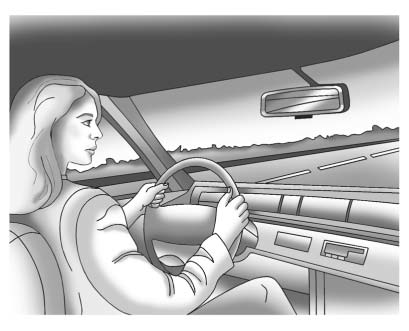Steering in Emergencies
There are times when steering can be more effective than braking.
For example, you come over a hill and find a truck stopped in your lane, or a car suddenly pulls out from nowhere, or a child darts out from between parked cars and stops right in front of you. These problems can be avoided by braking—if you can stop in time. But sometimes you cannot stop in time because there is no room. That is the time for evasive action—steering around the problem.
The vehicle can perform very well in emergencies like these. First apply the brakes. See Braking . It is better to remove as much speed as possible from a collision. Then steer around the problem, to the left or right depending on the space available.

An emergency like this requires close attention and a quick decision.
If holding the steering wheel at the recommended 9 and 3 o'clock positions, it can be turned a full 180 degrees very quickly without removing either hand. But you have to act fast, steer quickly, and just as quickly straighten the wheel once you have avoided the object.
The fact that such emergency situations are always possible is a good reason to practice defensive driving at all times and wear safety belts properly.
See also:
Retained Accessory Power (RAP)
These vehicle accessories may be used for up to 10 minutes after the engine is
turned off:
Audio System
Power Windows
Sunroof
The power windows and sunroof will continue to work for up to ...
Control of a Vehicle
Braking, steering, and accelerating are important factors in helping to control
a vehicle while driving. ...
Engine Drive Belt Routing
2.4L L4 Engine
Belt removal and installation
requires special tools. See your
dealer for service.
3.6L V6 Engine ...


